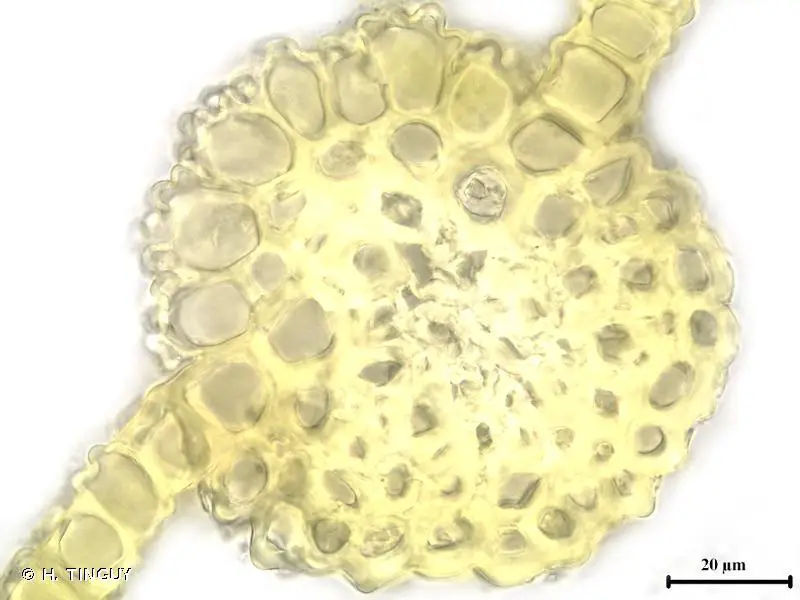
Pott_tru-insitu.jpg from: https://blogs.ubc.ca/biology321/?page_id=4905
Introduction
The world of mosses is a fascinating one, filled with tiny, resilient plants that have been around for millions of years. Among these ancient survivors is the Tortula flagellaris (Schimp.) Mont., a member of the Pottiaceae family, commonly known as Tortula. This unassuming moss has captured the interest of enthusiasts worldwide, and for good reason.
Background
Before we delve into the details of this remarkable moss, let’s set the stage. Mosses are small, non-vascular plants that belong to the Bryophyta division, which also includes liverworts and hornworts. These ancient plants have been around for over 400 million years, predating even the dinosaurs. They play a crucial role in various ecosystems, acting as pioneers in colonizing new environments and providing habitats for other organisms.
Main Content
Morphology and Identification
Tortula flagellaris is a small, acrocarpous moss, meaning its sporophytes (spore-bearing structures) grow at the tips of the stems. Its leaves are lanceolate (lance-shaped) and spirally twisted when dry, giving the plant a distinctive appearance. The leaf margins

Tortula-ruralis-Star-Moss-clusters.jpg from: https://terrariumtribe.com/terrarium-plants/tortula-ruralis-star-moss/
are recurved, and the costa (midrib) is prominent. When moist, the leaves become spreading and twisted, revealing their bright green color.
One of the most striking features of Tortula flagellaris is its flagelliform (whip-like) gemmae (asexual reproductive structures). These gemmae are borne at the tips of specialized branches called flagella, which can detach and disperse, allowing the moss to colonize new areas.
Global Distribution and Habitat
Tortula flagellaris is a cosmopolitan species, meaning it can be found on almost every continent. It thrives in a wide range of habitats, from urban areas to natural environments. You might find it growing on soil, rocks, tree bark, or even concrete surfaces. This moss is particularly adept at colonizing disturbed areas, making it a common sight in cities and along roadsides.
Ecological Roles and Adaptations
Despite its small size, Tortula flagellaris plays an essential role in its ecosystems. It acts as a pioneer species, helping to stabilize and enrich soils, and providing a habitat for other organisms, such as insects and microorganisms.
One of the key adaptations that allow Tortula flagellaris to thrive in diverse environments is its ability to tolerate desiccation. When conditions become dry, the moss can enter a state of dormancy, reviving once moisture returns. This remarkable ability to “resurrect” after prolonged periods of dryness is a testament to the resilience of these ancient plants.
Case Studies/Examples
Tortula flagellaris has been the subject of numerous scientific studies, highlighting its importance and versatility. For example, researchers have investigated its potential use as a

153772014060961817.jpeg from: https://www.picturethisai.com/wiki/Tortula_muralis.html
bioindicator for monitoring air pollution levels, as mosses are known to accumulate pollutants from the atmosphere.
In urban areas, Tortula flagellaris has been observed growing on various man-made structures, such as

93766_orig_0.jpg from: https://idfg.idaho.gov/species/taxa/33411

266885.jpg from: https://inpn.mnhn.fr/espece/cd_nom/5233
concrete walls and pavements

5888497_orig.jpg from: https://www.centralcoastbiodiversity.org/sidewalk-moss-bull-tortula-ruralis.html
. This ability to colonize these environments has led to its use in green infrastructure projects, where it can help to improve air quality and reduce the urban heat island effect.
Technical Table

tortula-sand-dune-moss-2DEDT6B.jpg from: https://www.alamy.com/tortula-sand-dune-moss-image387537651.html

Tortula-canescens-Mont-Photo-by-Michael-Lueth.jpg from: https://www.researchgate.net/figure/Tortula-canescens-Mont-Photo-by-Michael-Lueth_fig8_335836108

Tortula_muralis0_600.jpg from: https://sagebud.com/tortula-moss-tortula-muralis

913.33249.jpg from: https://eol.org/pages/53845
| Characteristic | Description |
|---|---|
| Phylum | Bryophyta |
| Class | Bryopsida |
| Order | Pottiaceae |
| Genus | Tortula |
| Species | flagellaris |
| Growth Form | Acrocarpous |
| Leaf Shape | Lanceolate |
| Leaf Margin | Recurved |
| Costa | Prominent |
| Gemmae | Flagelliform |
Conclusion
Tortula flagellaris is a remarkable moss that has captured the hearts of enthusiasts worldwide. Its resilience, adaptability, and unique features make it a fascinating subject of study. As we continue to explore the world of mosses, we are reminded of the incredible diversity and importance of these often-overlooked plants. Perhaps the next time you encounter a patch of Tortula flagellaris, you’ll pause and appreciate the incredible journey this ancient survivor has undertaken to thrive in our modern world.
Ponder this: In a world where change is constant, what lessons can we learn from the resilience and adaptability of mosses like Tortula flagellaris?